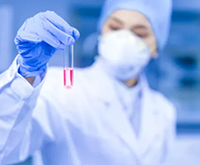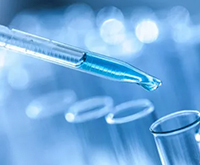Serum Amyloid A (SAA)
Serum amyloid A proteins are a family of apolipoproteins associated with high-density lipoprotein in plasma.
Different isoforms of SAA are expressed constitutively at different levels or in response to inflammatory stimuli. These proteins are produced predominantly by the liver.
SAA is an acute-phase protein that can rapidly increase about 1000 times within 4-6h after infection and rapidly decrease to the average level after eliminating pathogens. SAA is a sensitive indicator of illness and recovery of inflammation.
Compared with CRP, which is the most widely used in clinical practice, SAA has one of the most important differences: SAA increases viral, mycoplasma, and bacterial infections and is more sensitive than CRP.
In bacterial infections, CRP elevated but not in viral and mycoplasma infections or only slightly.
Serum Amyloid A (SAA) Products
| Antigen | Application |
| Recombinant Human Serum amyloid A Prokaryotic Expressed Full-length | For immunodiagnostic: ELISA, LFA, CLIA |
Serum Amyloid A Protein
SAA is an acute-phase protein and binds to plasma high-density lipoprotein (HDL). Similar to CRP, it is used to assess the course of the acute phase response. SAA is a sensitive parameter. It begins to increase after about 8 hours of the inflammatory response and exceeds the upper limit of the reference range earlier than CRP. However, the difference between the median value of CRP in ordinary people and the upper limit of the reference range is about ten times. Only five times in SAA. Elevated SAA is more common than CRP in mild infections, e.g., many viral infections. In infectious diseases, the absolute rise of SAA is higher than that of CRP, so SAA measurement, especially for "normal" and minimal acute phase reactions, can provide better discrimination. Usually, about two-thirds of cold patients have elevated SAA, but less than one-half of patients have the same elevated CRP. In cases of viral infection, high concentrations of SAA and CRP were seen in adenovirus-infected individuals.
SAA Antibody
The reactive forms of SAA and CRP are parallel in the recovery phase of acute infection, which applies to bacterial and viral infections. SAA was not elevated in lupus erythematosus and ulcerative colitis. Elevated SAA in the metastatic stage of malignancy usually shows higher values than in the tumor confined to the organ. For transplant rejection, the SAA test is a reasonably sensitive indicator. In a study of kidney transplant recipients, 97% of denials were based on elevated SAA. In detecting irreversible transplant rejection, the mean concentration was 690 ± 29 mg/L, while the relevant level in cases of reversible rejection episodes was 271 ± 31 mg/L. Chronically elevated SAA concentrations in patients with rheumatoid arthritis, tuberculosis, or leprosy are a prerequisite for synthesizing AA-amyloid fibers, which are also used to diagnose secondary amyloidosis.


















